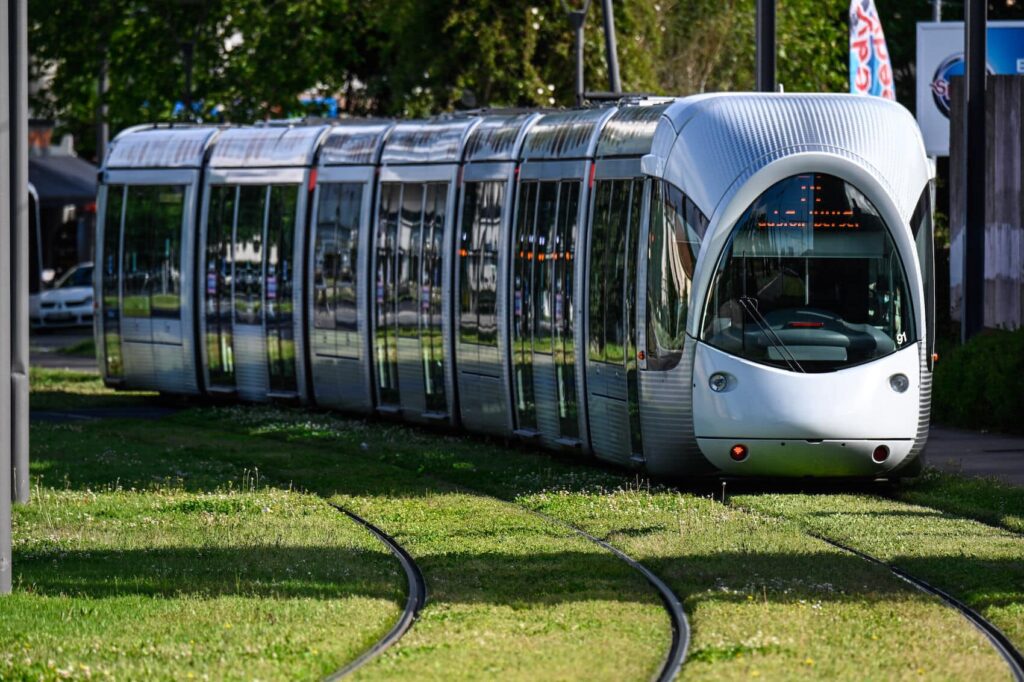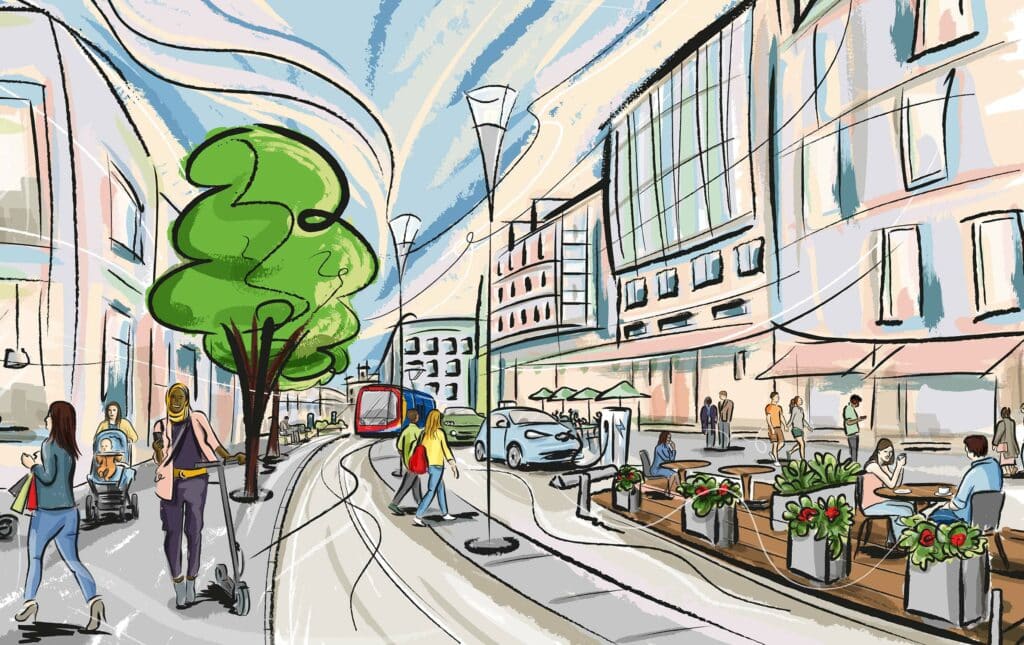When the British government and the five council leaders of the West Yorkshire Combined Authority reached a £1.8bn devolution deal in March 2020, a journey began. The agreement made a commitment to a “modern mass transit system” and with the West Yorkshire Mass Transit Vision 2024 in place and a re-commitment from the recent Network North announcement, things are starting to take shape. Andrew Dugdale, SYSTRA Market Director for MRT and LRT, explores how a mass transit system could benefit West Yorkshire.
It was the late Alastair Darling, then Transport Secretary, who pulled the plug on the Leeds tram in 2005. Back then, Tracy Brabin was appearing on our TV screens in the evening soaps, not the morning news bulletins, and trams might not have been the first thing on her mind. But when she was voted into office as Mayor of West Yorkshire in May 2021, she made it clear that Leeds, and the wider area, is still suffering economically as a consequence of Mr Darling’s decision, and has made it her passion since to fight for better transport links.
WYCA’s Mass Transit Vision 2040 sets out the challenge – how can mass transit help make West Yorkshire’s public transport network more accessible and more inclusive, while also helping achieve the aim of net zero carbon emissions by 2038. No mean feat, but fortunately there are many examples from around the world where mass transit has just done that.

Progressive French cities which have invested wholeheartedly in a tram network include Bordeaux, Lyon, and Toulouse – all with a comparable conurbation size to the Leeds area – and 20 smaller French cities including Dijon, Reims and Tours have also enthusiastically joined the tram club and have been reaping the social, environmental and economic rewards for years.
There are others across the globe – Dubai, Bologna – and UK examples too of course – Manchester, West Midlands, Sheffield, Tyne and Wear.
Trams (other mass transit systems are available) work, and now the time is right for West Yorkshire to get on board.
Mass transit systems get people not just from A to B, but to better jobs, to college or university, to see their friends and family, and to simply enjoy what their local area has to offer. West Yorkshire missed out initially, but almost 20 years on from Mr Darling’s decision, the government has realised it is time to think again.
Under the guise of the £36bn Network North announcement, it’s now up to West Yorkshire to stake its claim for a modern mass transport system that improves lives and builds better communities, supports the economy and boosts productivity, and helps tackle climate change.
West Yorkshire is home to 2.4 million people, and has some of the most deprived neighbourhoods in the country. The challenges these communities face cannot be solved by transport solutions alone, but with more reliable services, smarter ticketing options, accessible stations, stops and platforms, and integration with other modes of transport and local facilities, there is much to be gained. Mass transit across West Yorkshire, linked to cycling and walking routes, bus and rail services, will not only support the thriving metropolitan environment of cities like Leeds and Bradford, but represents an investment across all communities in the authority area.
The Network North commitment to a £2.5bn West Yorkshire mass transit system will mean Leeds will no longer be the biggest European city without a mass transit system. With connections to Bradford, Wakefield, Halifax and Huddersfield, it will open up employment opportunities and rebalance the local economy.
Whichever system of high-capacity mass transit is chosen, what’s clear is that it must dovetail and complement existing transport infrastructure. A transport system for an area as geographically diverse and complex as West Yorkshire will need to extend the reach of its train stations and bus interchanges with connecting tram and bus stops, and active travel infrastructure, so that people can move between modes quickly and easily. This is a crucial factor in ensuring modal shift that sticks, and requires a joined-up approach to how we plan, design and deliver our whole neighbourhoods, not just our transport systems.
It is clear that Mayor Brabin and the West Yorkshire Combined Authority have an inspiring vision for unlocking their region’s potential. The mission now is to secure the funding, and develop and deliver the ambitious plan that the people of West Yorkshire need and deserve.
 Australia
Australia  Brazil
Brazil  Canada
Canada  China
China  Denmark
Denmark  France
France  India
India  Indonesia
Indonesia  Ireland
Ireland  Italy
Italy  Malaysia
Malaysia  New Zealand
New Zealand  Norway
Norway  Poland
Poland  Saudi Arabia
Saudi Arabia  Singapore
Singapore  South Korea
South Korea  Sweden
Sweden  Taiwan
Taiwan  Thailand
Thailand  United States
United States  Vietnam
Vietnam 

